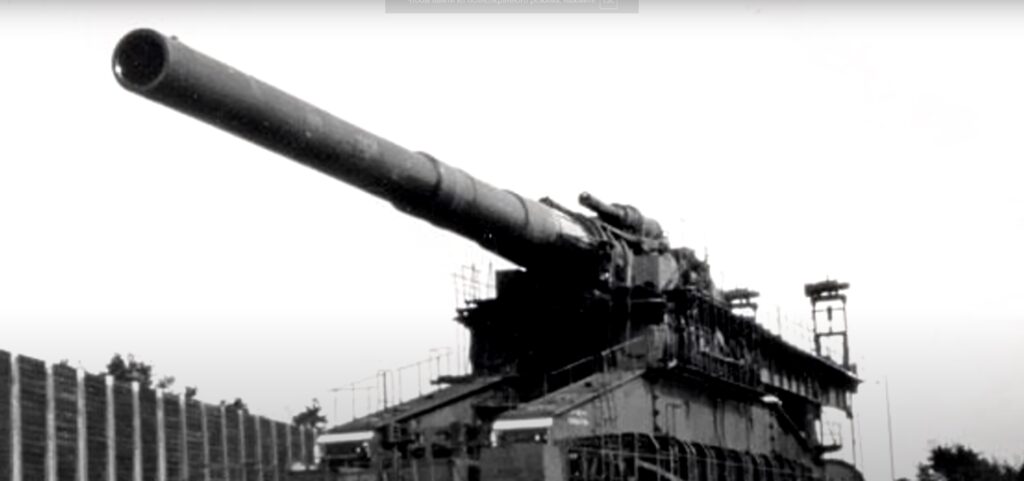The Gustav Railway Gun, also known as the Schwerer Gustav or Dora, remains an iconic piece of World War II history. Constructed by the Nazis during the early 1940s, this gigantic railway gun was designed to penetrate the most fortified enemy defenses. While only two were ever built, they left an indelible mark on the annals of military technology. The ruins of these colossal machines provide a fascinating window into wartime engineering and destruction. This article delves into the history, design, construction, and ultimate fate of the Gustav Railway Gun ruins.
Background and Development
In the late 1930s, the Nazis identified the need for a weapon capable of breaking through the heavily fortified French Maginot Line. Plans for a colossal railway gun were drawn up by the Krupp engineering company under the direction of engineer Fritz Todt. It took over two years of development and construction, and by 1941, the first Schwerer Gustav gun was completed.
Technical Specifications and Design
The Gustav Railway Gun was a monumental feat of engineering. Weighing approximately 1,350 tons and measuring 47.3 meters (155 feet) in length, it remains the largest-caliber rifled weapon ever used in combat. The gun was mounted on a special rail system designed to support its massive weight, requiring two parallel sets of tracks.
Its 80-centimeter (31.5-inch) caliber barrel could fire shells weighing up to seven tons with a range of 47 kilometers (29 miles). The shells were specially designed to penetrate heavily fortified structures, such as concrete bunkers and underground tunnels. To achieve its incredible range, the Gustav gun utilized a two-stage firing process. The first stage involved a smaller charge that pushed the shell into the barrel, while the second stage propelled the shell out of the barrel at supersonic speeds.
Assembly and Transportation
The sheer size and weight of the Gustav Railway Gun made it a logistical nightmare. To assemble the gun, a special crane was needed, which could lift up to 500 tons. The entire process of assembly and disassembly took several weeks and required a workforce of 2,000 men. Once assembled, the gun was transported by rail, with each of its two parallel tracks requiring 25 axles.
Combat and Deployment
The first Gustav gun was deployed in 1942 during the Siege of Sevastopol, where it proved to be an effective weapon against heavily fortified Soviet positions. Over the course of the five-week siege, the gun fired 42 rounds, destroying a munitions depot, an underground bunker, and several other key targets. The second Gustav gun, nicknamed “Dora,” was deployed on the Eastern Front but saw limited action. Ultimately, the guns proved to be too cumbersome and resource-intensive to be practical in the rapidly changing conditions of World War II.
The Ruins: A Testament to Engineering and Destruction
After the war, the Gustav guns were dismantled, and their remains were transported to Germany. Today, these ruins serve as a stark reminder of the destructive power of human ingenuity. While much of the original machinery has been lost or destroyed, the remaining components offer a glimpse into the incredible engineering that went into constructing these colossal machines.
The Gustav gun’s massive barrel, which once launched seven-ton projectiles, now lies in sections, overgrown with vegetation. Its rail system, which once supported the gun’s immense weight, has rusted and decayed over time. The ruins also serve as a somber reminder of the human cost of war, as thousands of forced laborers were used in the construction and operation of these weapons.

Preservation and Cultural Significance
The Gustav Railway Gun ruins have become an important historical site, attracting historians, military enthusiasts, and tourists alike. Efforts to preserve the remnants of these once-mighty machines are ongoing, as they hold significant cultural and historical value. The ruins offer valuable insights into the technologies, strategies, and ideologies that shaped the course of World War II, as well as the broader history of military engineering.
In recent years, there have been proposals to create a dedicated museum or memorial site to showcase the remaining components of the Gustav guns. While funding and logistics remain challenging, the establishment of such a site would contribute to the preservation and understanding of this unique piece of military history.
Lessons from the Gustav Railway Gun Ruins
The ruins of the Gustav Railway Gun provide an opportunity to reflect on the advancements and consequences of military technology. Despite their immense power and innovative design, these weapons proved to be impractical and ultimately ineffective in the rapidly changing conditions of the war. The Gustav gun’s enormous size and logistical challenges made it difficult to deploy, and it consumed vast amounts of resources that could have been allocated elsewhere.
Moreover, the Gustav Railway Gun highlights the ethical questions surrounding the development and use of such destructive weapons. The enormous human and material costs associated with the construction and operation of these guns must be weighed against their military effectiveness. The ruins stand as a reminder of the destructive potential of human ingenuity and serve as a cautionary tale for future generations.
Conclusion
The Gustav Railway Gun ruins offer a fascinating window into the history of World War II, military engineering, and the destructive power of human innovation. As the largest-caliber rifled weapon ever used in combat, the Gustav gun remains an impressive testament to the capabilities of wartime engineering. At the same time, the challenges and consequences associated with these colossal machines provide valuable lessons for future military technologies and strategies.
Today, the ruins of the Gustav guns serve as a reminder of the devastating power of war and the responsibility that comes with developing and using such destructive weapons. As efforts continue to preserve these historical artifacts, the Gustav Railway Gun ruins will remain a powerful symbol of the intersection between engineering and destruction, and an important site for understanding the complexities of military history.